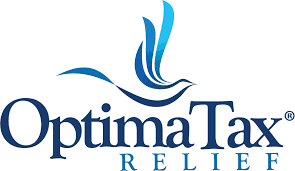The IRS Fresh Start Program is a government initiative designed to help individuals and businesses struggling with unpaid taxes. It provides a variety of relief measures that make it easier for taxpayers to resolve their tax debts, including the ability to pay back taxes in installments and the opportunity to compromise on certain tax responsibilities.
The goal of this article is not only to inform readers about the various elements of the Fresh Start Program, but also to guide them through the process of applying and highlighting how to avoid common pitfalls.
The IRS Fresh Start Program, introduced in 2012, has enabled many taxpayers to deal with their tax delinquencies in a less burdensome manner. By providing various avenues of tax relief, the IRS has attempted to ease the financial strain that tax debt can cause, especially for those already dealing with other financial issues.
Understanding the IRS Fresh Start Program
- Installment Agreements: This allows taxpayers to pay their tax debt in monthly installments over a period of up to six years.
- Offer In Compromise: The IRS may agree to accept less than the full amount owed if they believe the taxpayer cannot pay the full debt.
- Tax Liens: The Fresh Start Program increased the amount that taxpayers must owe before the IRS files a Notice of Federal Tax Lien, giving taxpayers more time to resolve their debt.
In this article, we aim to provide a comprehensive overview of the IRS Fresh Start Program. This will include details about eligibility criteria, application processes, and potential traps to avoid. More importantly, we want to underscore the importance of dealing with tax debt promptly and responsibly to avoid further complications.
Objective of The Article
- To provide a detailed overview of the IRS Fresh Start Program
- To guide taxpayers through the application process
- To highlight common mistakes and traps to avoid
- To underscore the importance of addressing tax debt responsibly and promptly
Through this article, we hope to inform readers about the IRS Fresh Start Program and its benefits. We aim to encourage taxpayers who are struggling with tax debt to take proactive measures to resolve their financial issues.
The IRS Fresh Start Program is an initiative developed to help financially struggling taxpayers repay their tax debts more easily. This program was introduced as a means to aid Americans facing tax issues, particularly those who emerged from the financial crisis of the late 2000s with significant financial burdens. The Fresh Start Program is designed to provide relief to taxpayers who owe the IRS, alleviating tax debt while easing the process for taxpayers to settle their outstanding tax obligations.
Eligibility Criteria
- The taxpayer must be an individual or a self-employed person with an outstanding tax obligation.
- The taxpayer’s outstanding balance must be below $50,000.
- The taxpayer must agree to direct debit payments towards their tax debt.
- The taxpayer must not have freshly filed for bankruptcy or be in an open bankruptcy proceeding.
The Fresh Start Program offers immense benefits to eligible taxpayers who are struggling with overwhelming tax debts. This program aims to provide these individuals a fresh start, with numerous advantages designed to make the process of settling tax debts less burdensome.
Benefits of the Fresh Start Program
- The program allows for extended repayment terms, enabling taxpayers to pay their tax debts over six years.
- The program reduces the minimum monthly payments, which makes it much easier for eligible taxpayers to manage their monthly budget.
- Penalties and interest may be waived or reduced under this program.
- The IRS may cease collection attempts if the taxpayer is actively participating in the Fresh Start Program.
Understanding the IRS Fresh Start Program, its eligibility criteria, and the benefits it offers is crucial for those dealing with tax debts. It is a lifeline for many who would otherwise be unable to find their way out of growing tax debts.
The journey to financial freedom begins by understanding the intricacies of the Fresh Start program. When dealing with tax debt, the Fresh Start program can be a beneficial tool to utilize. But before you can take advantage of this program, an in-depth understanding of how it operates is essential. With this knowledge, and a hypothetical tax debt situation, you can calculate how it could potentially affect your monthly installments.

Step 1: Understanding the Fresh Start Program
- The program was introduced by the Internal Revenue Service (IRS) to assist taxpayers in resolving their tax debts.
- It aims to make it easier for individual taxpayers and small businesses to pay their tax responsibilities by offering them an all-inclusive plan to resolve their debt without further financial pressure.
- The program does this by increasing the dollar threshold when liens are generally filed, making installment agreements available to more taxpayers, and adding more flexibility when choosing an Offer-In-Compromise.
Moving forward, let’s delve into the process of applying for the Fresh Start program. It’s not as daunting as it might seem, but it does require careful attention to detail. You’ll need to provide accurate financial information and meet specific eligibility criteria to ensure your application’s success.
Step 2: Applying for the Fresh Start Program
- Begin by determining your eligibility based on the IRS guidelines.
- Gather all necessary financial information, including income, expenses, and asset details.
- Fill out the IRS installment agreement request form and other required documents.
- Submit the application and wait for the IRS’s response.
Now comes the part where you can experience the direct impact of the Fresh Start program on a personal level. Using a hypothetical tax debt situation, let’s challenge you to calculate your potential monthly installment. This will give you a clearer picture of how the program can significantly influence your financial journey.
Step 3: Calculating Your Potential Monthly Installment
- Determine your current tax debt situation. For our example, let’s consider a tax debt of $50,000.
- Using the Fresh Start program’s criteria, calculate the total repayment period. The repayment period can be extended to six years.
- Divide your total tax debt by the number of months in your repayment period.
- In our example, your monthly installment under the program would work out to approximately $694 per month ($50,000 divided by 72 months).
The above calculation is a rudimentary example. Your actual monthly installment may vary depending on additional factors such as penalties, interest, and other fees. Always consult with a tax professional when making these calculations for an accurate assessment. The Fresh Start program could be your path to a financial fresh start, but remember to navigate this path with due diligence and professional advice.
Navigating the financial and legal landscape can be fraught with complexities that, if misunderstood, harbor the potential for damaging consequences. Particularly when handling tax debts, taxpayers need to stay vigilant, informed, and aware of the myriad of risks involved. It’s not surprising, then, that enlisting the assistance of companies like Optima Tax Relief can prove attractive. These companies claim to help taxpayers in trouble and offer relief from crippling tax burdens.

Scams and Fraudulent Practices
- Promising unrealistic outcomes: Some companies make grand promises of eradicating tax debts, which is usually impracticable unless specific IRS qualifying conditions are met.
- Charging upfront fees: Often, these companies require hefty upfront payments to start work on your case, with no guarantee of a positive outcome.
- Providing inaccurate or misleading information: They might give the wrong advice or misinterpret IRS rules to convince taxpayers that they qualify for programs they don’t.
The story of John Doe, a self-employed plumber, serves as a harrowing reminder of the potential perils. John turned to a tax relief company, trusting in their promise to negotiate his $50,000 tax debt down to a fraction. He paid an upfront fee of $2,500. Months later, not only was his debt unresolved, but it had also grown with added interest and penalties.
Common Complaints About the Program
Taxpayers often report that the companies take an excessively long time to resolve their cases, during which the tax debt continues to accumulate.
Lack of communication
Companies may not keep the client well-informed about the progress, causing uncertainty and anxiety.
Unresolved tax debts
Some complain that the company did nothing to resolve their tax debts.
The Optima Tax Relief company, one of the largest and most advertised, has not been immune to these complaints and issues. It came under the lawsuit spotlight for allegedly defrauding consumers out of millions of dollars. The lawsuit claimed Optima lured consumers with false promises, charged upfront fees, and then failed to deliver on its promises.
Real-Life Testimonies of Victims
Mary, a small business owner, hired a tax relief company to help with her $60,000 tax debt. After paying an upfront fee of $4,000, she claims that the company did nothing and stopped responding to her calls.
Another victim, Tom, reported the company he hired to handle his $30,000 tax debt. After paying a $3,000 upfront fee, Tom’s case languished for months, and his debt escalated due to accumulating interests.
The experiences shared by John, Mary, and Tom underscore the importance of being both informed and cautious when seeking tax relief assistance. The risks are real, and the consequences can be financially and emotionally devastating.
Just like Leonardo DiCaprio’s character Frank Abagnale in the movie “Catch Me If You Can”, who masterminded an elaborate scam as a fraudulent doctor, lawyer, and pilot, criminals today are using the Fresh Start Program as their own illicit playground. Fortunately, vigilant consumers can take proactive steps to protect themselves from these scams.
Recognize Promises That Are Too Good To Be True
- Be wary of guarantees that all debts will be eliminated. No legitimate agency can promise 100% debt cancellation.
- Stay alert to demands for immediate payment. The Fresh Start Program doesn’t ask for upfront fees.
- Watch out for “exclusive” or secret plans. All details about the Fresh Start Program are public information.
In the same way that Frank Abagnale manipulated the trust of those around him, scammers will do their best to build a believable façade. Always stay skeptical and conduct your own independent research.
Verify Credentials
- Always check the credentials of any agency or individual claiming to represent the Fresh Start Program.
- Confirm their identity through a trusted third-party source such as the Better Business Bureau or your state Attorney General’s office.
- Be cautious of unsolicited contacts. The Fresh Start Program typically does not reach out to individuals; instead, taxpayers apply to them.
The Fresh Start Program is a lifeline for those drowning in tax debt, much like how Frank Abagnale sought a fresh start in life by running from his past. However, unlike Frank’s movie, you don’t want to let cunning con artists play the lead role in your real-life financial drama.
Protect Your Sensitive Information
- Don’t share personal or financial information with anyone unless you’re sure they’re trustworthy.
- Shred any documentation that contains sensitive information after its necessary use.
- Use secure, encrypted websites when submitting information online.
Just as the character of Carl Hanratty, the dogged FBI agent in “Catch Me If You Can”, relentlessly tracked down Abagnale, law enforcement agencies, and organizations are actively pursuing those who exploit the Fresh Start Program. By taking preventative measures, you can help ensure your financial wellbeing doesn’t become a casualty of these scams.
In conclusion, this article has provided an in-depth examination of various points that are fundamental to understanding the landscape of today’s service industry. We have shed light on the risks, scams, and complaints prevalent in the sector, as well as highlighted some lawsuits involving companies within the industry. We hope this information is beneficial in enabling you to make well-informed decisions.
Call to Action: Sign Up with our Partner Firms
- Take advantage of the top-notch services offered by our industry-leading partner firms.
- Leverage the unique opportunity to work with organizations that prioritize customer satisfaction.
- Gain access to a host of benefits that enhance your user experience.
Additionally, we explored numerous interactive elements, including polls, quizzes, and surveys, intending to engage and inform you in an interesting way. We hope these features not only made the article more enjoyable but also enriched your understanding of the topic.
Evaluate Services: Review our Comparison Charts
- Use our detailed comparison charts to assess the strengths and weaknesses of different service providers.
- Make apples-to-apples comparisons to identify the best fit for your specific needs.
- Save time and effort by utilizing our comprehensive research.
Furthermore, the article incorporated a few relatable real-life testimonies and case studies. These personal stories were included to enhance your understanding of the topic and to help you relate to the information provided.
Get Involved: Share and Discuss
- Share what you’ve learned from this article with your network.
- Start a conversation about these important issues and learn from the experiences of others.
- Advocate for change and improvement in the service industry.
Trending topics were also highlighted to give you a feel of what’s currently happening in your industry. This timely information is useful in helping you stay updated and make informed decisions in real time.
Stay Updated: Subscribe for More
- Receive regular updates and insights delivered straight to your inbox.
- Stay informed and ahead of industry trends and changes.
- Gain exclusive access to premium content and features.
The ultimate goal of this article was to inform and caution you about potential pitfalls in the service industry and provide you with the necessary tools to navigate these challenges effectively. With the information provided, we strongly encourage you to sign up with our partner firms or review our comparison charts before choosing a service. Your informed decision will lead to a more satisfying experience. In the end, your satisfaction is our success.
Real-life case study
Introducing John Doe, a successful businessman from New York, whose journey through the IRS Fresh Start Program is both illustrative and inspiring, John found himself in a devastating predicament when he was hit with an unexpected tax liability, plunging him into a period of financial uncertainty. After examining various options, John decided to enroll in the Fresh Start Program, which was designed by the Internal Revenue Service (IRS) to help taxpayers manage their outstanding tax liabilities.
The Initial Struggles
- Struggling with the shock of an unexpected tax liability.
- Navigating the intricacies of the IRS Fresh Start Program.
- Overwhelmed with the complexity of the paperwork involved.
- Anxiety caused by potential financial instability.
John was initially overwhelmed with the complexity of the program and the stacks of paperwork he had to complete. Additionally, the anxiety of his situation only added to the difficulty. However, determined to find a way out of his predicament, John meticulously studied the program’s guidelines and sought professional tax consultation to overcome these challenges.
The Quest For Knowledge
- Gaining a thorough understanding of the IRS Fresh Start Program.
- Seeking professional tax consultation.
- Learning how to manage and compile the necessary financial documents.
Despite these initial struggles, John was able to turn his situation around courtesy of his relentless pursuit of knowledge. He spent countless hours reading up about the program, familiarizing himself with IRS guidelines, and learning how to fill out the necessary paperwork correctly. His commitment paid off when he was able to successfully enroll in the program, marking a significant step towards overcoming his financial crisis.
The Road to Recovery
- Successful enrollment in the IRS Fresh Start Program.
- Negotiation of an Installment Agreement plan with the IRS.
- Regular and consistent payment of tax liabilities, leading to financial stability.
- A valuable lesson learned about proper financial planning.
Ultimately, John’s journey through the IRS Fresh Start Program resulted in him negotiating an Installment Agreement plan with the IRS. This allowed him to make regular and consistent payments towards his tax liabilities, leading to a reliable recovery from his financial crisis. Most importantly, this challenging experience taught John a valuable lesson about the importance of adequate financial planning.
John Doe’s story is a real-life testimonial of how the Fresh Start Program can be a significant help for individuals with unexpected tax liabilities. His journey highlights the challenges that one may encounter, how they can be triumphed over, and the importance of understanding and properly navigating such government programs. This serves as a beacon of hope for others who find themselves in similar predicaments, offering the promise of a successful way out.
The COVID-19 pandemic has massively impacted different sectors of society, and the IRS Fresh Start Program has not been exempt. The IRS Fresh Start Program, aimed at making it easier for individuals and small businesses to pay back taxes and avoid severe penalties, had to adapt in the face of the global pandemic.
Impact of COVID-19 on the IRS Fresh Start Program
- The pandemic led to a decrease in enforcement actions as the IRS focused on helping taxpayers to comply with their tax responsibilities amidst financial hardship.
- Installment agreements under the Fresh Start Program have been adjusted to allow for more flexibility, understanding the difficulty some people and businesses are having with payments.
- The IRS has paused a number of collections activities to minimize the burden on taxpayers during these trying times.
With the unprecedented impact of the pandemic, tax laws have also been rapidly changing. These changes have directly influenced the workings of the IRS Fresh Start Program, and it’s essential to understand these changes.
Recent changes in tax laws and their effect on the Fresh Start Program
- The Taxpayer Certainty and Disaster Tax Relief Act of 2020 expanded and extended several tax provisions, like the Earned Income Tax Credit and the Child Tax Credit, which could affect eligibility for the Fresh Start Program.
- The CARES Act, passed in response to the pandemic, includes tax relief measures that could affect individuals and businesses’ tax standings, potentially providing further assistance beyond the Fresh Start Program.
- New tax laws have also extended the period taxpayers have to pay their tax debts without a tax lien being filed, an interesting benefit for those under the Fresh Start Program.
The COVID-19 impact and recent changes in tax laws have redefined the IRS Fresh Start Program’s landscape. We understand that this may raise questions, uncertainties, and even fears around tax debt.
Frequently Asked Questions
- Q: What is the IRS Fresh Start Program?
A: The IRS Fresh Start Program is an initiative developed by the Internal Revenue Service to enable taxpayers to pay off their tax debts more easily. It offers more flexible terms, assisting individuals and small businesses who owe back taxes to resolve their tax debts without causing undue hardship. - Q: Who is eligible to participate in the IRS Fresh Start Program?
A: Any taxpayer who owes the IRS $50,000 or less in tax, penalties, and interest may be eligible to participate in the IRS Fresh Start Program. The program is designed to assist both individual taxpayers and small businesses. - Q: What are the benefits of the IRS Fresh Start Program?
A: The program offers various benefits including the ability to avoid tax liens, more time to pay off debts, and the opportunity to settle for less than the total amount owed through an Offer in Compromise. - Q: How long does it take to complete the IRS Fresh Start Program?
A: The duration depends on the specific payment plan you choose. Installment agreements can range from 120 days to 6 years, and Offers in Compromise can take anywhere from several months to two years to be accepted and paid. - Q: What is an Installment Agreement under the Fresh Start Program?
A: An Installment Agreement is a monthly payment plan where you pay off your tax debts in smaller, more manageable amounts over time. This can be over a period of up to 72 months (6 years). - Q: What is an Offer in Compromise under the Fresh Start Program?
A: An Offer in Compromise is an agreement between a taxpayer and the IRS that settles the taxpayer’s tax liabilities for less than the full amount owed. It is only accepted when the amount offered represents the most the IRS can expect to collect within a reasonable period. - Q: Can the IRS Fresh Start Program help if I have a tax lien?
A: Yes, the Fresh Start Program can help with tax liens. The program increases the tax lien threshold from $5,000 to $10,000, and in some cases, the IRS may remove the lien notice altogether. - Q: How can I apply for the IRS Fresh Start Program?
A: To apply, taxpayers must complete IRS Form 9465 for an Installment Agreement, or Form 656 for an Offer in Compromise. These forms can be found on the official IRS website. - Q: Can I be denied for the IRS Fresh Start Program?
A: Yes, not all taxpayers will qualify for the program. The IRS will take into consideration your income, expenses, asset equity, and ability to pay when deciding if you are eligible. - Q: Is professional help recommended when applying for the Fresh Start Program?
A: While it’s not required, hiring a tax professional can be beneficial. They can guide you through the process, help you understand all the program’s nuances, and increase your chances of being accepted into the program.







